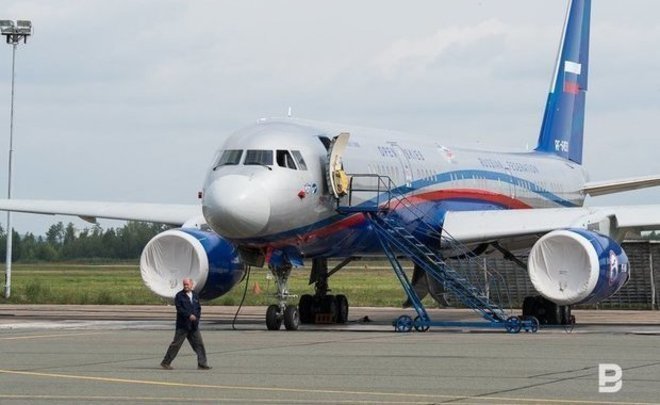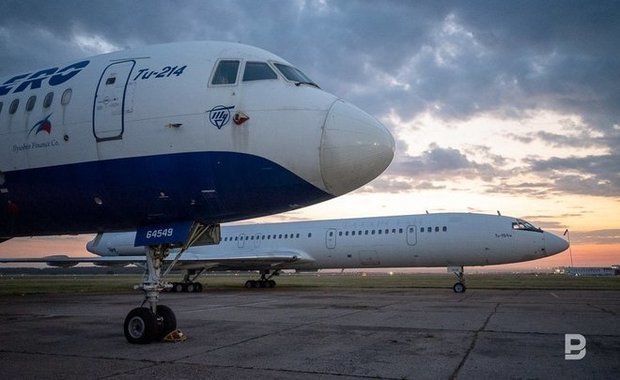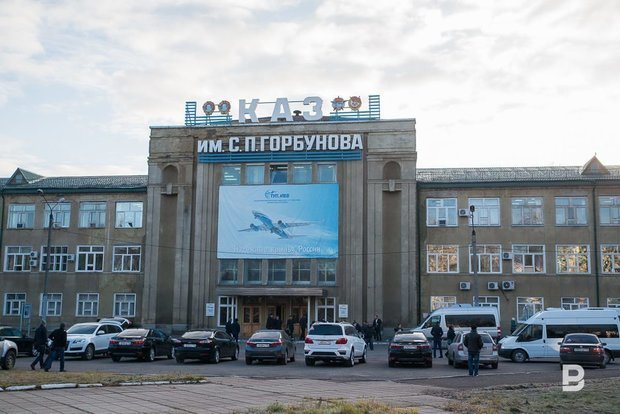Natalia Pyryeva: ‘Domestic aircraft building is gaining momentum’
Analyst of FG Finam — about import substitution in Russian aviation industry in crisis conditions

Import substitution projects have been launched in Russia in the conditions of restrictions on international air traffic and problems with foreign airliners. The focus of attention is three domestic aircraft, the production of one of which — Tu-214 — is now being increased at the Kazan Aircraft Production Association. More details about the problems and prospects of the Russian aviation industry — in the author's column for Realnoe Vremya by Natalia Pyryeva, an analyst at Finam FG.
Three planes in the focus of attention
The topic of import substitution in the context of the industrial sector is now very relevant in the aviation industry, which is going through difficult times due to the limited international air traffic and difficulties with the operation of foreign airliners. At the moment, the focus is on the production of three domestic aircraft — SSJ New, MS-21 and Tu-214.
The SSJ New short-haul aircraft is a modification of Superjet 100 with maximum import substitution of components and systems. In addition to the remotorisation of the French-Russian SaM-146 engine to the Russian PD-8, the work on SSJ New provides for the replacement of avionics and other foreign systems and units with domestic ones. At the moment, five gliders for SSJ in a new configuration are being assembled at once, the first flight of the updated vessel is scheduled for spring 2023, and by the end of next year it is planned to complete tests, certify the import-substituted Superjet and start mass production. The delivery of the first two SSJ New aircraft is scheduled for 2023, and from 2024 — full-fledged serial production is to be launched with the volume of deliveries of about 20 aircraft a year.
The first prototype of the MS-21 medium-haul aircraft, previously tested with the American PW1400G engine, has been re-motorised and has already made more than 100 successful flights with the Russian PD-14 engine. In October, a second MS-21 aircraft with a Russian-made main power unit joined the flight tests, which will increase the density of flights and speed up the process of tuning the engine and onboard systems for the most efficient operation as part of the MS-21. It is planned to complete the certification of the import-substituted liner with the PD-14 engine and a wing made of domestic composites by the end of this year. The production of the first six aircraft is expected in 2024, and then it is planned to enter the production of about 72 aircraft a year.

Task is to produce 115 Tu-214 aircraft in Kazan by 2030
The medium-haul Tu-214 aircraft consists mainly of domestic components and is equipped with the certified Russian PS-90A engine. With regard to this liner, the task is not import substitution, but increasing production, since until this year one or two vessels a year were produced in special modifications for various state structures of Russia. At the moment, the Kazan Aircraft Production Association is tasked with producing 115 Tu-214 aircraft in 2023-2030: 3 — in 2023, 7 — in 2024, 10 — in 2025, 15 — in 2026, 20 — in 2027-2030.
Additionally, we would like to note that the medium-haul aircraft MS-21 and Tu-214 do not differ in technical characteristics from the latest Boeing 737-800 and Airbus A321, the number of which prevails in the air fleets of Russian air carriers.

The largest customer of Russian aircraft was Aeroflot Group, which, within the framework of the Eastern Economic Forum, signed an agreement for the supply of 339 aircraft until 2030, which include 89 SSJ New aircraft, 210 MS-21 vessels and 40 Tu-214 aircraft. According to the plans, deliveries begin next year, when the first two SSJ New aircraft arrive in the group's fleet. The first six MS-21 liners and the first seven Tu-214 vessels are expected to be delivered in 2024.
Aeroflot's activities under pressure
If we look at the airline industry, in particular at its largest player, Aeroflot, the latest operating report of Aeroflot for 3Q and 9M 2022 demonstrates that the company's activities, of course, remain under pressure due to a reduction in international traffic under the influence of the foreign policy situation, as well as due to the temporary closure of 11 important Russian airports, but there are also positive trends.

Passenger traffic of the group's airlines decreased by 9,5% YoY in 3Q 2022, to 14,1 million people, while on domestic lines the volume of traffic increased by 1% YoY, to 12,7 million people. Separately, Aeroflot's passenger traffic in July-September increased by 5,5% YoY, to 8 million people, and on domestic lines it jumped by 25,6% YoY, to 6,9 million people. In 3Q 2022, operational efficiency increased: the percentage of passenger seat occupancy in the group increased by 5,6 percentage points YoY, to 89.5% (on international lines — by 12,6 percentage points, to 87,4%, on domestic lines — by 2,1 percentage points, to 89,8%), separately for Aeroflot, the indicator increased by 10,4 percentage points YoY, up to 88,8% (on international lines — by 20 percentage points, up to 89,5%, on domestic lines — by 4,6 percentage points, up to 88,7%). In total, for 9M 2022, Aeroflot Group airlines transported 31,3 million passengers (-8,4% YoY), of which 27,4 million (-4,4% YoY) were on domestic flights. The percentage of passenger seat occupancy has increased by 2,9 percentage points YoY, to 84%.
We believe that the planned resumption of flights to Turkey by Pobeda low-cost airline from December 23 of this year will have a positive impact on the operational metrics of the entire group.
Reference
The author's opinion may not coincide with the position of the editorial board of Realnoe Vremya.